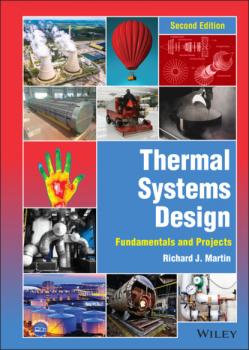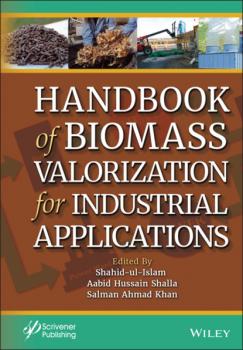Физика
Различные книги в жанре ФизикаEin E-Auto kaufen für Dummies
Sie spielen mit dem Gedanken, sich ein E-Auto zu kaufen, wollen sich aber zuvor gründlich informieren? Dann wird Ihnen dieses Buch eine große Hilfe sein. Reiner Silberstein erklärt Ihnen, wie Sie den richtigen Wagen für Ihre Bedürfnisse finden und wie Sie Fördermittel erhalten. Er gibt Ihnen Tipps, was das Laden des E-Autos betrifft und wie Sie den Akku schonen. Zuletzt räumt er noch mit einigen Mythen über E-Mobilität auf. So hilft Ihnen dieses Buch, eine gute Entscheidung beim Autokauf zu tätigen.
Step-by-Step Design of Large-Scale Photovoltaic Power Plants
How to design a solar power plant, from start to finish In Step-by-Step Design of Large-Scale Photovoltaic Power Plants, a team of distinguished engineers delivers a comprehensive reference on PV power plants—and their design—for specialists, experts, and academics. Written in three parts, the book covers the detailed theoretical knowledge required to properly design a PV power plant. It goes on to explore the step-by-step requirements for creating a real-world PV power plant, including parts and components design, mathematical formulations and calculations, analyses, evaluations, and planning. The book concludes with a discussion of a sample solar plant design, as well as tips on how to avoid common design mistakes, and how to handle the operation and maintenance of PV power plants. Step-by-Step Design of Large-Scale Photovoltaic Power Plants also includes: Thorough introductions to the basic requirements of design, economic analyses, and investment revenue Comprehensive explorations of the requirements for feasibility study and grid connection study Introducing solar resource, and determining optimum tilt angle and module inter-row spacing Presenting methodology for design of large-scale PV plant, requirements of engineering document, and optimal design algorithm In-depth examinations for selecting PV module, inverter, string, and DC side equipment Practical discussions of system losses, as well as estimation of yearly electrical energy production, capacity factor, and performance ratio of large-scale PV plant Perfect for professionals in the solar power industry, Step-by-Step Design of Large-Scale Photovoltaic Power Plants will also earn a place in the libraries of equipment manufacturers and university professors seeking a one-stop resource for the design of PV power plants.
Handbook of Biomass Valorization for Industrial Applications
HANDBOOK of BIOMASS VALORIZATION for INDUSTRIAL APPLICATIONS The handbook provides a comprehensive view of cutting-edge research on biomass valorization, from advanced fabrication methodologies through useful derived materials, to current and potential application sectors. Industrial sectors, such as food, textiles, petrochemicals and pharmaceuticals, generate massive amounts of waste each year, the disposal of which has become a major issue worldwide. As a result, implementing a circular economy that employs sustainable practices in waste management is critical for any industry. Moreover, fossil fuels, which are the primary sources of fuel in the transportation sector, are also being rapidly depleted at an alarming rate. Therefore, to combat these global issues without increasing our carbon footprint, we must look for renewable resources to produce chemicals and biomaterials. In that context, agricultural waste materials are gaining popularity as cost-effective and abundantly available alternatives to fossil resources for the production of a variety of value-added products, including renewable fuels, fuel components, and fuel additives. Handbook of Biomass Valorization for Industrial Applications investigates current and emerging feedstocks, as well as provides in-depth technical information on advanced catalytic processes and technologies that enable the development of all possible alternative energy sources. The 22 chapters of this book comprehensively cover the valorization of agricultural wastes and their various uses in value-added applications like energy, biofuels, fertilizers, and wastewater treatment. Audience The book is intended for a very broad audience working in the fields of materials sciences, chemical engineering, nanotechnology, energy, environment, chemistry, etc. This book will be an invaluable reference source for the libraries in universities and industrial institutions, government and independent institutes, individual research groups, and scientists working in the field of valorization of biomass.
Encyclopedia of Renewable Energy
ENCYCLOPEDIA OF RENEWABLE ENERGY Written by a highly respected engineer and prolific author in the energy sector, this is the single most comprehensive, thorough, and up-to-date reference work on renewable energy. The world’s energy industry is and has always been volatile, sometimes controversial, with wild swings upward and downward. This has, historically, been mostly because most of our energy has come from fossil fuels, which is a finite source of energy. Every so often, a technology comes along, like hydrofracturing, that is a game-changer. But is it, really? Aren’t we just delaying the inevitable with these temporary price fixes The only REAL game-changer is renewable energy. For decades, renewable energy sources have been sought, developed, and studied. Sometimes wind is at the forefront, sometimes solar, and, for the last decade or so, there has been a surge in interest for biofeedstocks and biofuels. There are also the “old standbys” of nuclear and geothermal energy, which have both been around for a very long time. This groundbreaking new volume presents these topics and trends in an encyclopedic format, as a go-to reference for the engineer, scientist, student, or even layperson who works in the industry or is simply interested in the topic. Compiled by one of the world’s best-known and respected energy engineers, this is the most comprehensive and up-to-date encyclopedia of renewable energy ever written, a must-have for any library. Encyclopedia of Renewable Energy: Is written in an encyclopedic style, covering every aspect of renewable energy, including wind, solar, and many other topics Offers a comprehensive coverage of the industry, from the chemical processes of biofeedstocks and biofuels to the machinery and equipment used in the production of fuel and power generation Is filled with workable examples and designs that are helpful for practical applications Covers the state of the art, an invaluable resource for any engineer Audience Engineers across a variety of industries, including wind, solar, process engineering, waste utilization for fuels, and many others, such as process engineers, chemical engineers, electrical engineers, petroleum engineers, civil engineers, and the technicians and other scientists who work in this field
Cindynics, The Science of Danger
This book offers a new perspective to uncover the keys to accident and disaster avoidance. Created with a working group, it presents research and understanding on the root causes of disasters. Indeed, beyond technical failures, human beings are at the heart of organizations and, through the exchange of data and information, influential relationships inevitably emerge such as conflicts of interest and cooperation.<br /><br />With examples selected from multiple accidents and disasters, this book demonstrates that analyzing the causal chain that leads to an accident is not sufficient if we wish to truly understand it. The role of operational and managerial actors and the complexities they generate are also explored.<br /><br /><i>Cindynics, The Science of Danger</i> helps readers develop their ability to identify gaps, deficits, dissonances, disjunctions, degenerations and blockages, which are the real dangers in inevitably evolving activity situations. With an easily-understandable approach, this book offers new perspectives in several fields (health, crisis management and conflict resolution).









